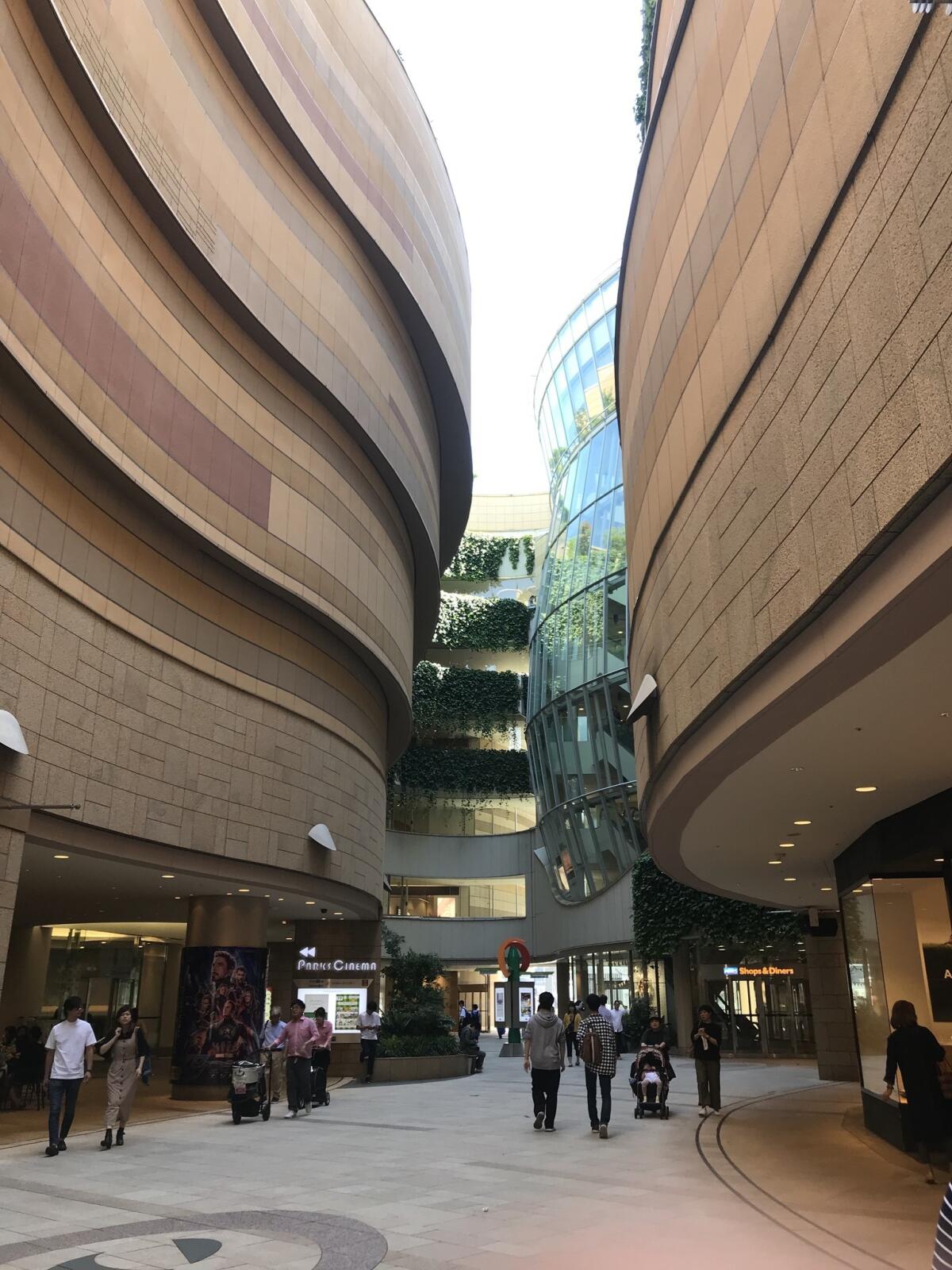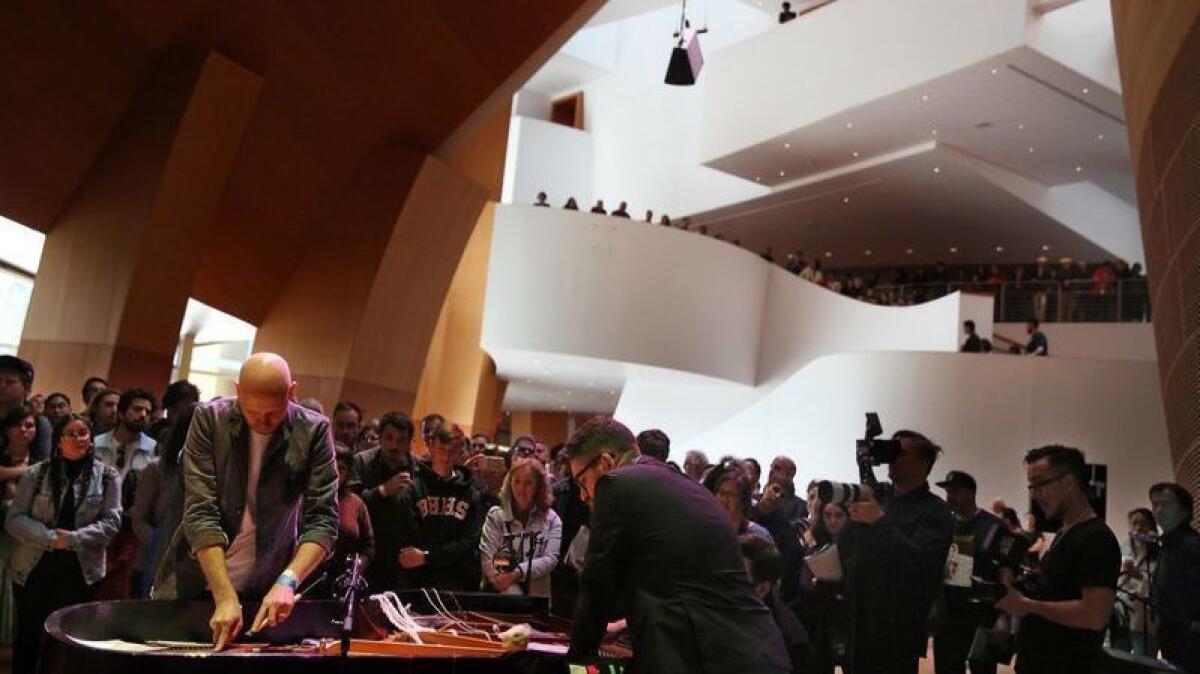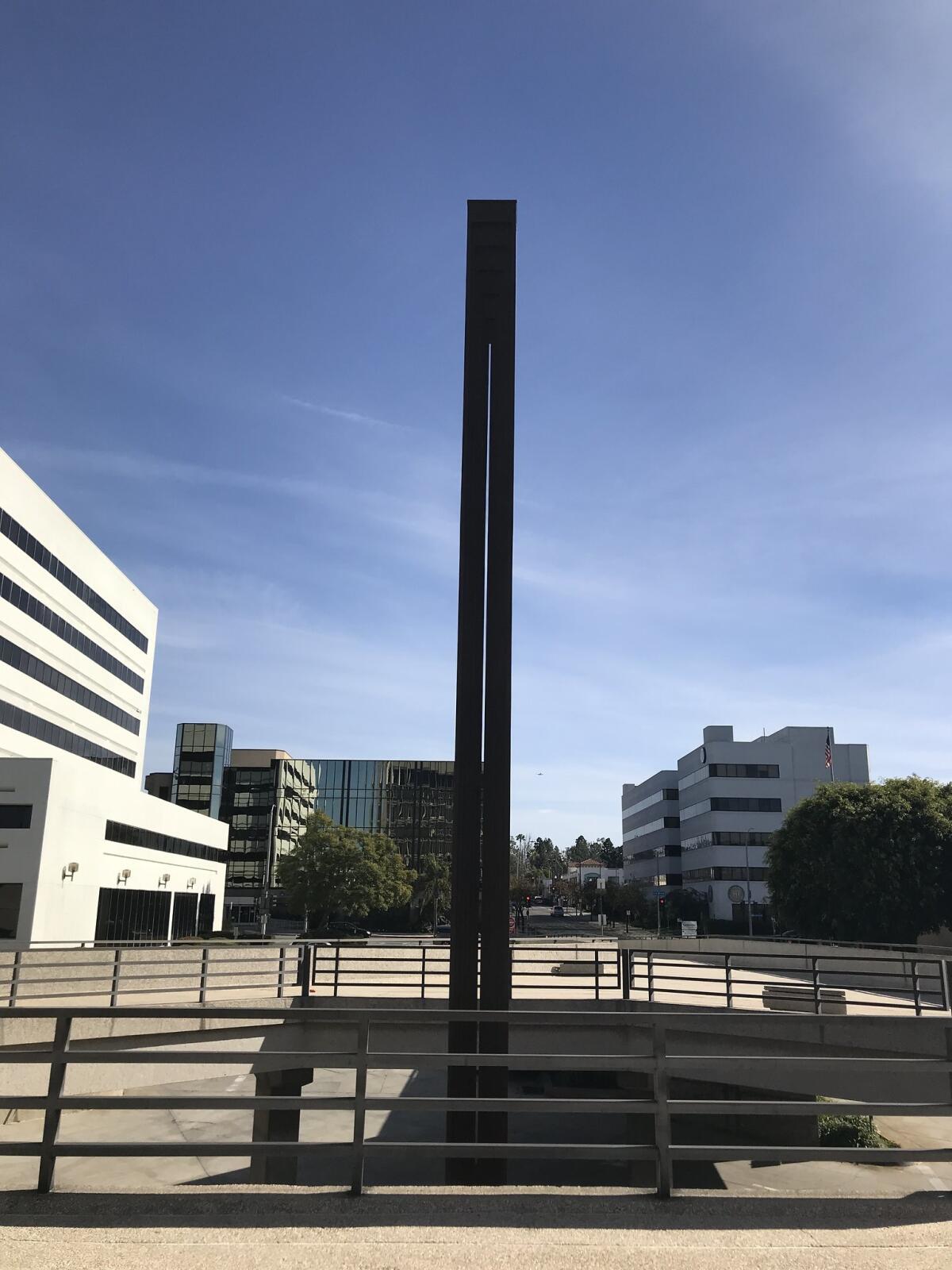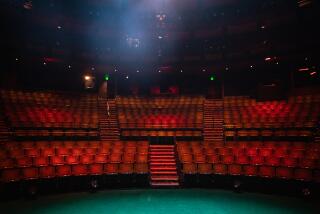Newsletter: Essential Arts: Time to place bets on the Tony Awards. Hint — we’re into ‘Hadestown’
It’s the end of another week, and the end of my supply of Japanese gummy candies. I’m Carolina A. Miranda, staff writer at the Los Angeles Times, with the week’s essential culture news:
Essential Guide to the Tony Awards
The Tony Awards are on Sunday! Times theater critic Charles McNulty has been reading the tea leaves and offers his insights on whether “Hadestown,” which has 14 nominations, should be crowned best musical. He makes a strong case for why it should.
McNulty also has a broader opinionated guide on the awards, parsing the chances of shows such as “Tootsie,” “The Prom,” “Network” and “The Waverly Gallery.” But to find out what they are, you’re just gonna have to click on the link.
On the “Hadestown” front, Times contributor Barbara Isenberg interviews director Rachel Chavkin, who has some choice things to say about the scarcity of women in directorial roles on Broadway. Isenberg also has an annotated guide to Chavkin’s tattoos.
Times culture reporter Ashley Lee has a profile of Anaïs Mitchell, the singer-songwriter who wrote the music and lyrics to the show. “I had no idea that it would have as long a life as it’s had,” she says.
Plus, the story of how Dale Franzen, the former artistic director at the Broad Stage in Santa Monica, helped make the show a reality. And a profile of ensemble cast member Timothy Hughes, the viral hottie of “Hadestown.” (Essential Arts is not above objectification.)
In non-“Hadestown” news, Isenberg also spoke with “Oklahoma!” actress Ali Stroker, who could become the first actress in a wheelchair to take home a Tony.
Heidi Schreck, the creator and star of “What the Constitution Means to Me” (two nominations), tells Ashley Lee that she will adapt her very personal play for the road, but is not planning to perform in the national tour: “I need a little break.”

On the Stage
In non-Tony news, Lucas Hnath’s experimental play “Dana H.” has landed at the Kirk Douglas Theatre, which Charles McNulty describes as “a profound contribution to the theater of trauma.” It is based on an audio recording of his mother describing a kidnapping that also explores the slippery nature of truth.
Rogue Machine’s “Ready, Steady, Yeti, Go,” has no yeti, but a storyline that looks at “the ugly truths behind nostalgic idealizations of America in the 1960s,” writes Margaret Gray.
F. Kathleen Foley reviews “Gather: Surprising Stories & Other Mischief” at the Pasadena Playhouse — in which John C. Reilly and Patrick Murphy fuse fairy tales and folk stories for a work that pays “overdue homage” to “Paul Sills’ Story Theatre” of the 1970s.
Dead again?
Reprise 2.0 theater company, which was resuscitated after closing in 2013, has run out of money after two productions — though it has sold tickets for three. Subscribers are angry, reports The Times’ Jessica Gelt. But company founder Marcia Seligson, tells Gelt that she still plans to produce a third show.
Gussying up the tar pits
The Natural History Museum of Los Angeles County announced this week that they have tapped three architectural firms to develop a master plan for the La Brea Tar Pits. The site hasn’t revised its master plan since the ‘70s, when the George C. Page museum was built. I asked museum director Lori Bettison-Varga what would happen to the fiberglass mammoth clinging to life at the edge of the main tar lake. She tells me that the mammoth’s iconic status has been “expressed to the teams.”
My principal piece of advice to the architects: Do. Not. Touch. The. Mammoth.
I talk with The Times’ Julia Wick, who writes the Essential California Newsletter (subscribe!) about what this all means.

A tale of two Isozakis
During my recent trip to Japan I visited to Arata Isozaki’s Kyoto Concert Hall. Isozaki is the Pritzker Prize-winning architect who designed the Museum of Contemporary Art Los Angeles. The concert hall, with its incredible artisanry and graceful transition spaces, is “a testament to the promise that Los Angeles squandered.”
Can this Jerde be saved?
Sort of related: Alissa Walker wrote a must-read in Curbed this week about the remodel of the San Diego’s once-dominant shopping mall Horton Plaza designed by L.A. architect Jon Jerde. Tech offices are going in and retail is being cut way back as the mall transforms into the Campus at Horton. The development’s whimsical Postmodern designs, with a riot of colors and stripes, are to be partly replaced with sleek glass facades (because we don’t have enough of those).
L.A.’s Westside Pavilion, another Jerde structure, is also set to go tech, having been leased by Google as office space. These cases speak to the endangered status of Postmodernism, and how cities seem hellbent on eradicating any vestige of its wry wit.
Which brings me back to Japan: I had the opportunity to see another Jerde-designed mall, Namba Parks, in Osaka, which was completed in 2003. The design is singular (and totally extra): Shaped like a slot canyon, it features several levels of ascending roofs draped in park.

The visit provided occasion to think about how vibrant Japanese malls are. Easy access to public transit is a prime reason. (Namba Parks sits over a rail line.) But also the mix of activities these spaces often provide: quiet zones, performance sites, highbrow chain stores as well as lots of mom and pop shops, not to mention bustling food courts with great take-out. Namba Parks even has a wedding chapel. In Japan, malls do not exist apart from the everyday life of a city — instead, they engage it. Something to consider as we try to resuscitate our own dead shopping centers.

A magical debut & more
Times classical music critic Mark Swed reviews Mirga Grazinyte-Tyla’s first major recording, which features a pair of somber symphonies by Mieczyslaw Weinberg. Though the music mournful, the performances, writes Swed, are “a uniquely resplendent, life affirming recording, far and away the most impressive conductor debut.”

The Los Angeles Philharmonic recently performed Mahler’s Symphony No. 8, a piece written for a full orchestra, a large chorus and eight vocal soloists. And it was “exultant,” writes Swed: “Gustavo Dudamel made the symphony the inevitable apogee of nine months’ worth of near quotidian historic big moments.”
Swed also hung out at the latest “Noon to Midnight” concert series at Walt Disney Concert Hall and says that it’s the best classical music bargain around: “$10 bought 12 hours of nonstop new music.”

Because he’s relentless, Swed also caught the opening show at the Ojai Music Festival, which this year is directed by the “dazzlingly daft” Canadian soprano Barbara Hannigan. A semi-staged performance of Stravinsky’s opera “The Rake’s Progress” kicked things off. Her conducting, Swed notes, displayed, “precision, rhythmic alacrity, a high level of theatricality and, of course, her remarkable versatility.”
Classical notes
Los Angeles Opera is currently staging a 1920s version of Verdi’s “La Traviata” (which was originally set in 19th century Paris), directed by Marta Domingo. The sets are luxurious and the fashions, gorgeous, reports contributor Timothy Mangan. “The trouble is there’s not much of a deep connection between the two eras.”

Passages
Stanley Tigerman, an architect known for witty Postmodern designs — such as a two-story Arby’s encased in glass — has died at 88.
Tony DeLap, an artist who helped define West Coast minimalism, has died at the age of 91. DeLap was part of the influential “Finish Fetish” artists and was the first art professor to be hired at UC Irvine. Jessica Gelt has the full obit.
Incidentally, there is a terrific work by DeLap that stands right outside of Inglewood City Hall.

Your support helps us deliver the news on the culture stories that matter most. Subscribe to the Los Angeles Times.
Ready for the Weekend
Margaret Gray has everything in the 99-seat theaters, including an Orson Welles’ adaptation of Herman Melville’s “Moby Dick.”
My weekly Datebook has the latest art happenings — such as British artist Sarah Lucas’s cheeky survey at the Hammer Museum.
And Matt Cooper has his weekend picks, which features a redo of 19th century Russian ballet by American Contemporary Ballet.
In other news…
— The Huntington Library, Art Collections, and Botanical Garden will enter a float in the Rose Parade for the first time in 50 years.
— New York’s Museum of Modern Art is about to close for renovations. Critic Holland Cotter asks if it will ever let folk art back in.
— Catherine Wagley examines the quick rise and fall of L.A.’s Main Museum.
— With an exhibition of art by Native American women, the Minneapolis Institute of Art reconsiders the nature of curation.
— San Francisco Ballet names Kelly Tweeddale, who has run opera and symphony companies in Seattle and Vancouver, its new director.
— The future of opera, writes critic Anne Midgette, is small.
— In France, the construction of a castle using medieval building techniques may help with the reconstruction of Notre Dame.
— Architecture critic Alexandra Lange is revisiting classic design books, starting with Virginia Savage McAlester’s “A Field Guide to American Houses.”
— John Lautner’s Bob Hope House in Palm Springs has been renovated in keeping with the architect’s original vision for the home.
And last but not least…
The Baby Trump blimp made a comeback — then got stabbed by a Trump supporter.
carolina.miranda@latimes.com | Twitter: @cmonstah
More to Read
The biggest entertainment stories
Get our big stories about Hollywood, film, television, music, arts, culture and more right in your inbox as soon as they publish.
You may occasionally receive promotional content from the Los Angeles Times.







